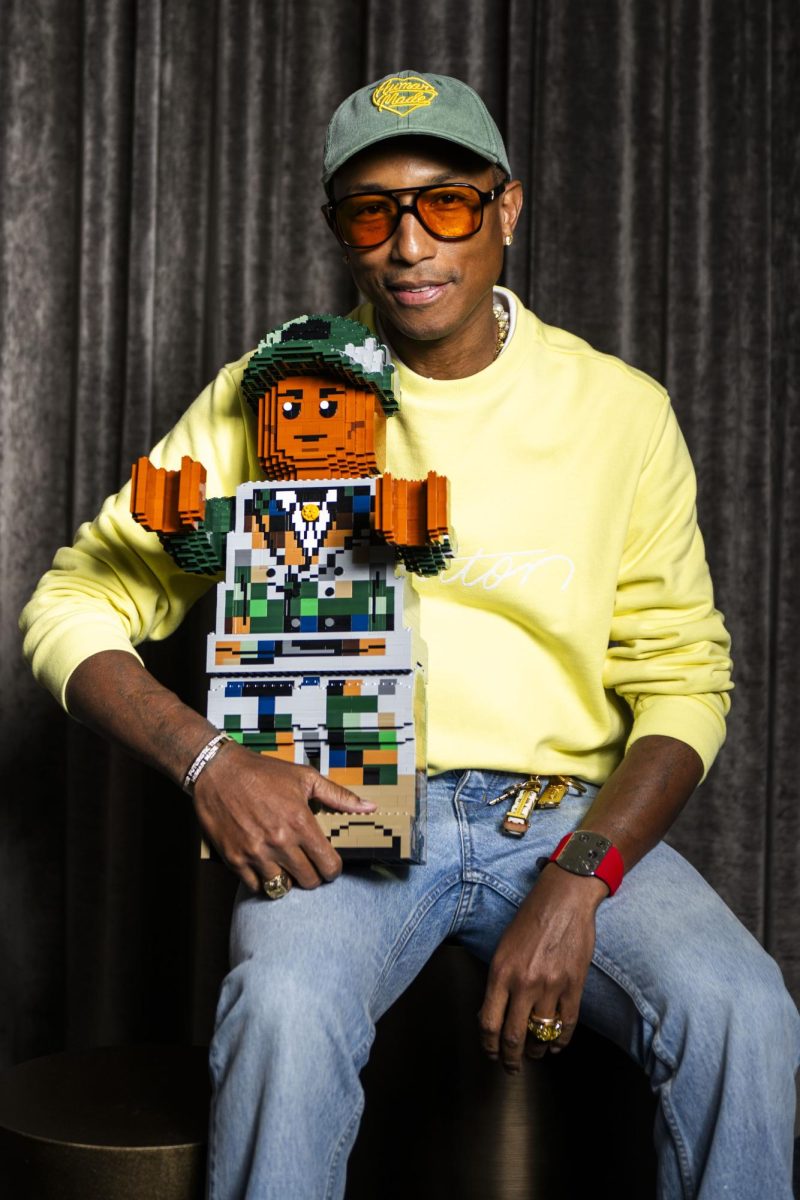Five years after “The Lego Movie 2: The Second Part” was released in theaters, a new Lego movie has been released, this time documenting the life of a musician rather than expanding upon a fictional universe.
“Piece by Piece” tells the story of Pharrell Williams, an artist and producer known by many for his songs like “Happy” and “Get Lucky” and known by fewer for his work on songs such as “Drop it Like it’s Hot” by Snoop Dogg and “Milkshake” by Kelis.
The film begins with William’s childhood in Virginia Beach and follows his path from wannabe musician to chart-topping singer and songwriter.
The movie explains some of his inspirations as a child and how they led him to fame, crediting his peers, the ocean and his grandmother, who gave him his first drum and kicked off his music production process.
The entire movie is filmed in a traditional documentary format, with the Lego characters — voiced by their real-life counterparts — talking in interviews, providing anecdotes and engaging with one another as if it were a live-action documentary or biography.
Trailers portrayed this film as an upbeat commentary on Williams’s life, with the Lego art style used as an innovative medium to tell his story. The Lego style was engaging and a different take on one of the most formulaic genres in media, but it didn’t always feel like the best option.
The fact that everything was done in Lego meant that the depth of emotion and impact was limited to what could be expressed by plastic figures. There are several scenes, such as when Williams is young and sitting in front of two speakers while listening to music, where there is clearly something important happening either emotionally or inside the character’s head, but their ability to express that is reduced. The benefit of live action films is that it is easy for a real person to display real human emotion, which is something this movie misses out on.
Another issue was it being difficult to perceive the movie as a sequence of real events. The Lego style meant watching without consideration that the film was the true story of someone’s life, despite being a documentary. It felt more like a Lego movie about a musician’s rise to fame that was created for children rather than a real story simply using Lego as a means of getting that story into the world.
All artists deserve to be publicized regardless of their fame or notoriety, and any opportunity to increase their profile with the public should be taken. However, this movie feels out of place in the biopic genre. With more recent examples including Freddy Mercury in “Bohemian Rhapsody,” Elton John in “Rocketman” and Johnny Cash in “Walk the Line,” this feeling of misplacement is partially because of the Lego design and partially because of Williams’s comparatively lower profile to these household names.
The movie was, however, surprisingly successful at informing me about Williams. I walked out of the theater knowing more about Williams than I had before, and I had more exposure to his work and methods. The movie introduced the fact that he has synesthesia — a condition allowing him to see colors and other visual effects when he hears sounds — and named some of the artists he has worked with throughout his career, including Kendrick Lamar, Jay-Z and Gwen Stefani.
The fact that the movie was done in a Lego design helped to create images and ideas of William’s experiences in a less complex way than had it been live action. When showing his synesthesia, for example, the producers were able to provide vivid representations of what Williams was seeing in a way that was easily-understandable and clear.
The movie was an attempt to increase awareness about one of the most influential producers of the last few decades, and though there were several aspects I disliked, there’s no doubt that it achieved its goal of telling William’s story.


